Without a Car
Traveling Without A Car?
Whether you chose to forego a rental car or were not able to reserve one, it is still possible to get around Kauai without a personal vehicle. In addition to the sustainable transportation options like shuttles and ride shares, you can also get around Kauai on foot and by bike.
Local Area Shuttles
Clark’s Hawaii Tours
This shuttle provides two routes out of Kukui Grove Center: 1. Hop On Hop Off Kauai Tour and 2. Scenic Kauai Tour.
Trolley Stop Tours
This shuttle provides hop-on-hop-off services between the cruise ship terminal and Harbor Mall, and scenic tours of Kauai.
Aloha Spirit Kauai Shuttle
This shuttle will take passengers around the Koloa/Poipu area from 5 pm – 10 pm or you can book a private charter. For times & route information call (808) 651-9945.
Kauai North Shore Shuttle
The North Shore Shuttle provides transportation to Hā‘ena State Park, which includes Kē‘ē Beach and the Kalalau Trail.
Some hotels also provide area shuttle options for their guests. Please check with your accommodations for details.
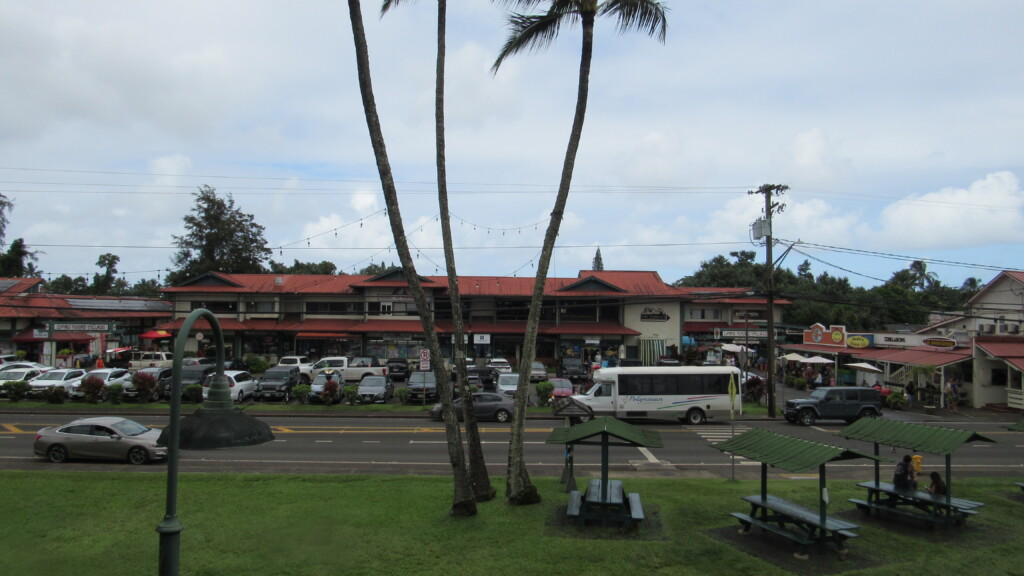
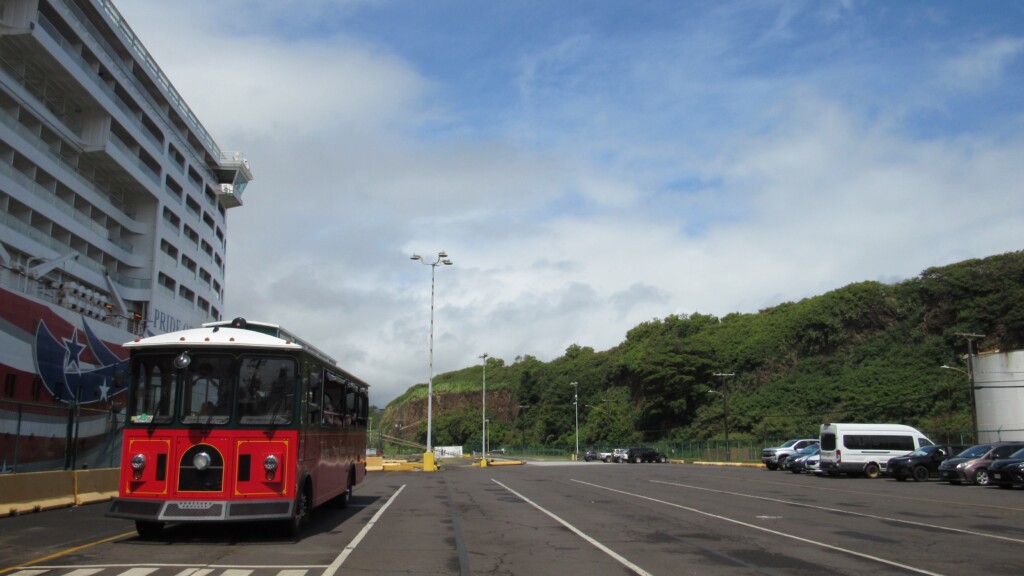
Public Transportation
The Kauai Bus is a low cost way to get around Kauai. You can view the Kauai Bus website for more information on the route and schedule. Please note that the bus cannot accommodate large luggage or oversized bags. Please check the Kauai Bus route map and schedules for stop locations.
Bike Rentals
Be sure to do your research about Kauai’s roads and highways before considering this transportation option as a means to move around the island. Bicyclists are encouraged to ride within towns and use bike lanes when available.
Motorbike Rentals
Be sure to do your research about Kauai’s roads and highways before considering this transportation option as a means to move around the island. Motor vehicle operators must be able to keep up with traffic on our two-lane highway.
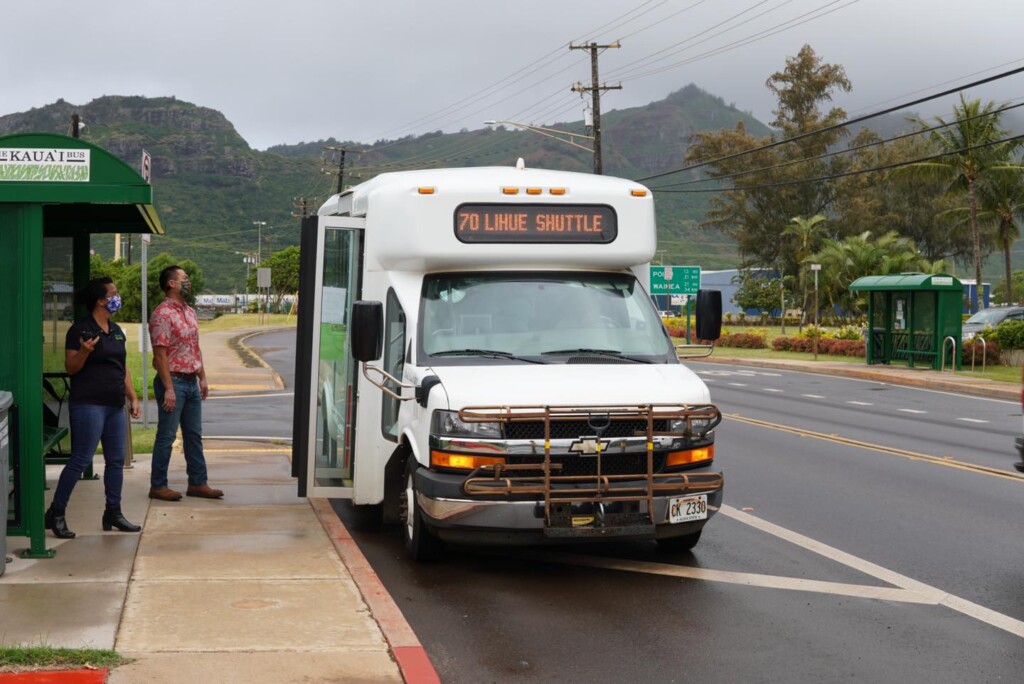
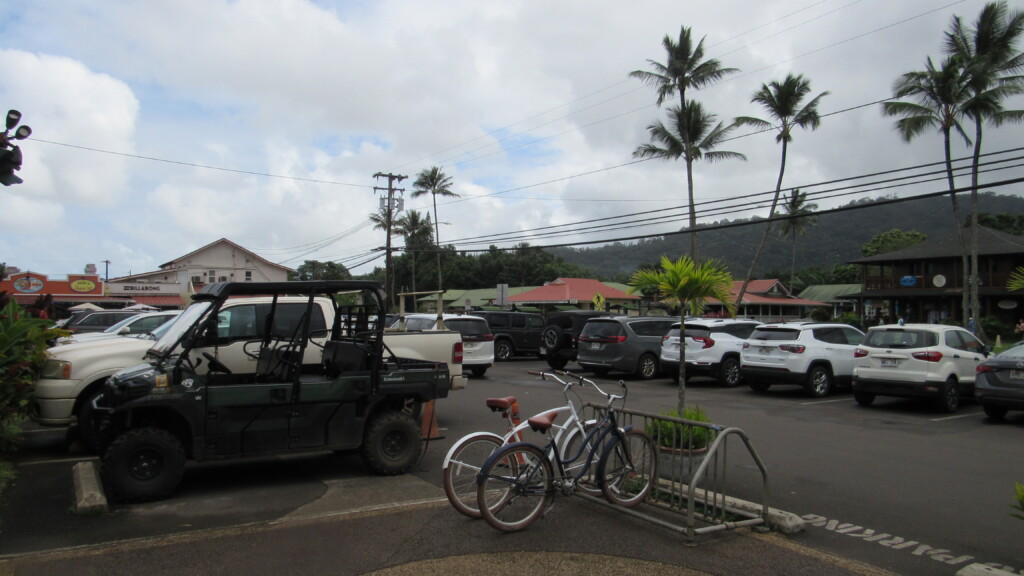

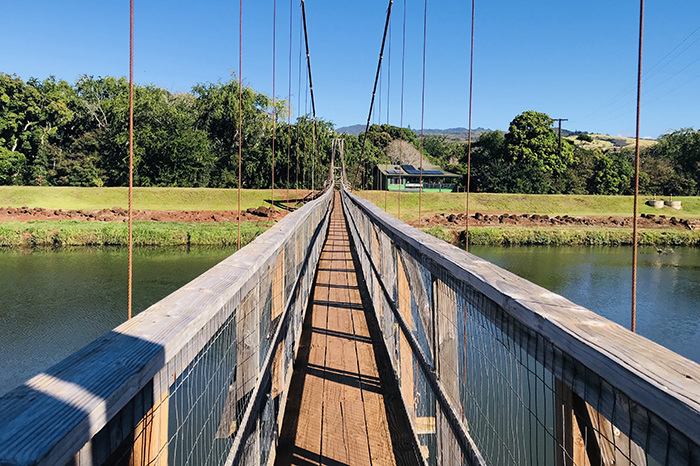
Regional Walking Guides:
South Side
The National Tropical Botanical Garden manages the Allerton Garden, located on Kauaʻi’s south shore between the ocean and the McBryde Garden. Garden visitors have a multitude of guided tour options to choose from, including visiting Queen Emma’s summer home, and while Allerton was designed primarily as a display garden, some areas focus on distinct plant collections. The Kauaʻi Bus provides transportation options to get to and around Poʻipū. Click here for more information on other transportation options.
Kukuiolono Loop Trail is a 1.4 mile trail located in Kalāheo. Park visitors can access the golf course, a Japanese Garden, view Hawaiian lava rock artifacts, and go to a local Mexican restaurant.
The National Tropical Botanical Garden manages the McBryde Garden, located on Kauaʻi’s south shore in the Lāwaʻi Valley. The garden holds a collection of tropical flora and the largest collection of native Hawaiian flora in existence. Many of these plants have been wild-collected by botanists and biologists from throughout tropical regions around the world and transported to McBryde Garden to research, cultivate and thrive. Visitors can book a tour and explore 50 acres of diverse plants.
Lihue
Rice Street and the surrounding area is pedestrian-friendly, and is also home to bus stops, an electric bike shop, and even a small skate park located at the County building fronting Eiwa Street. The Kauaʻi Bus and Līhuʻe Shuttle can get you to Rice Street and down to the Nāwiliwili Harbor.
There are multiple businesses, hotels, and even beach access and harbor access on this 1.7 mile street. You can find restaurants, a brewery, boutiques, hair salons, banks, and the County Civic Center. Often, community events and parades are hosted here. Further down the street on the Nāwiliwili side, there are hotels near the bus stops, two shopping centers, a gym, and the Nāwiliwili Harbor, which is the island’s main harbor, and the landing spot for cruise ships.
(Tip: If you are staying in a hotel, call your hotel to see if they have bikes or other transportation amenities available for guests.)
The County’s recently completed Līhuʻe Town Core Mobility and Revitalization Project, funded by the Department of Transportation Tiger Grant, has transformed Rice Street’s lanes, parking, and sidewalks by adding bike lanes, more curbside parking, and widened and shaded sidewalks. Enjoy a walk or bike ride down this historic street. Click here for more information on other transportation options.
This self-guided audio tour begins at Kalena Park in the center of downtown Līhuʻe. The tour is 1.3 miles long and takes pedestrians and bikers around Hardy Street, Eiwa Street, and Rice Street. There are 19 points of interest, with each point being significant to the history and culture of Līhuʻe. http://www.lihueloop.com/
Located on the grounds of the Kauaʻi Timbers Resort, these paths are open to members of the public from sunrise to sunset. The easily accessible walking trails are made up of joined loops that provide ocean and mountain views in a setting without traffic. You can visit the Hokuala farm while you’re there, and if you’re a guest at the Timbers Resort, you have access to different transportation amenities.
West Side
During the early 19th century, as European trade companies sought to expand their economic and political influence throughout the Western hemisphere, the Russian-American Company commissioned a series of defensive forts throughout Kauaʻi with permission from Kauaʻi’s last king, Kaumaualiʻi. A national historic landmark and the best-preserved of these forts, Pāʻulaʻula, or Fort Elizabeth, incorporates a Russian design with native-Hawaiian building materials and construction techniques. The fort is emblematic of King Kaumaualiʻi’s trade of local economic resources in exchange for foreign political and military protection from King Kamehameha I who successfully united the Hawaiian Islands through force and diplomacy. The 17-acre fort site is located on the on the opposite side of the Waimea River from Waimea Town. Considered the area of King Kaumaualiʻi’s birth, an eight-foot bronze statue honoring the king was placed there in 2021.
East Side (Kapaa)
Hawaiian for, “The Path that Goes by the Coast,” and named as one of America’s 10 Best Recreational Trails by USA Today, this multi-use path hugs Kauaʻi’s eastern coast along Kapaʻa’s beach-facing commercial edge. Walkers, joggers, roller skaters, and bikers can enjoy a sunny, open space along the ocean and away from traffic. The path holds various educational signage, providing historic and cultural information about Kapaʻa, as well as the marine animals that inhabit our coastline. Work to expand Ke Ala Hele Makalae with sections going south to Līhuʻe as well as north to Anahola is ongoing, but today, the path provides a great option to experience Wailua, Kapaʻa, and Keālia.
This pedestrian-friendly portion of Kūhiō Highway serves as Kapaʻa’s main road and commercial center. It features an array of hotels, convenience stores, hardware stores, grocery shops, fitness facilities, boutiques, restaurants, cafes, and food trucks spread out along over 3 miles of coastline. Weaved in through the shops are many historic churches and gravesites. The Kauaʻi Bus provides transportation options to get to and around Kapaʻa. Skip the Kapaʻa Crawl traffic by walking through town or renting a bike and riding along the Kauaʻi Path (Ke Ala Hele Makalae). Click here for more information on other transportation options.
(Tip: If you are staying in a hotel, call your hotel to see if they have bikes or other transportation amenities available for guests.)
North Shore
Surf shops, restaurants, boutiques, a music shop, and food trucks dot this stretch of road through the center of Hanalei town. Events such as water-sport gear swaps and live music can be found here, while further down the highway, a weekend farmer’s market showcases local produce, value-added goods, and crafts. Continuous sidewalk access on Kūhiō Highway exists from the Ching Young Village to Aku Road going eastward. Beyond the intersection of Kūhiō Highway and Aku Road towards the Hanalei River, sidewalk access becomes more intermittent, so exercise additional caution if walking along this area. The Kauaʻi Bus provides transportation options to get to and from Hanalei. Click here for more information on other transportation options.
The National Tropical Botanical Garden manages the Limahuli Garden & Preserve, located in a valley on Kauaʻi’s north shore toward the end of Kūhiō Highway before the entrance to Kēʻē Beach. Comprised of over 1,000 acres, 17 of which are publicly accessible, the garden and preserve is home to a myriad of endangered native Hawaiian plants and birds. Among the National Tropical Botanical Garden’s various branches, Limahuli Garden & Preserve is especially noted for its level of biological diversity and density. Within its natural landscape, the garden and preserve utilizes native Hawaiian cultivation methods and contains examples of archaeological sites in a valley considered to be the location of one of the earliest settlements in the Hawaiian Islands. For more information on hours and ticket pricing, please click here. Limahuli Garden & Preserve can be reached using the North Shore Shuttle. It can be boarded at the Waipā Park and Ride which is a 12-minute walk from the last Kauaʻi Bus stop in Hanalei. After your visit, walk five minutes to Hāʻena State Park to board a shuttle back to the Waipā Park and Ride.
